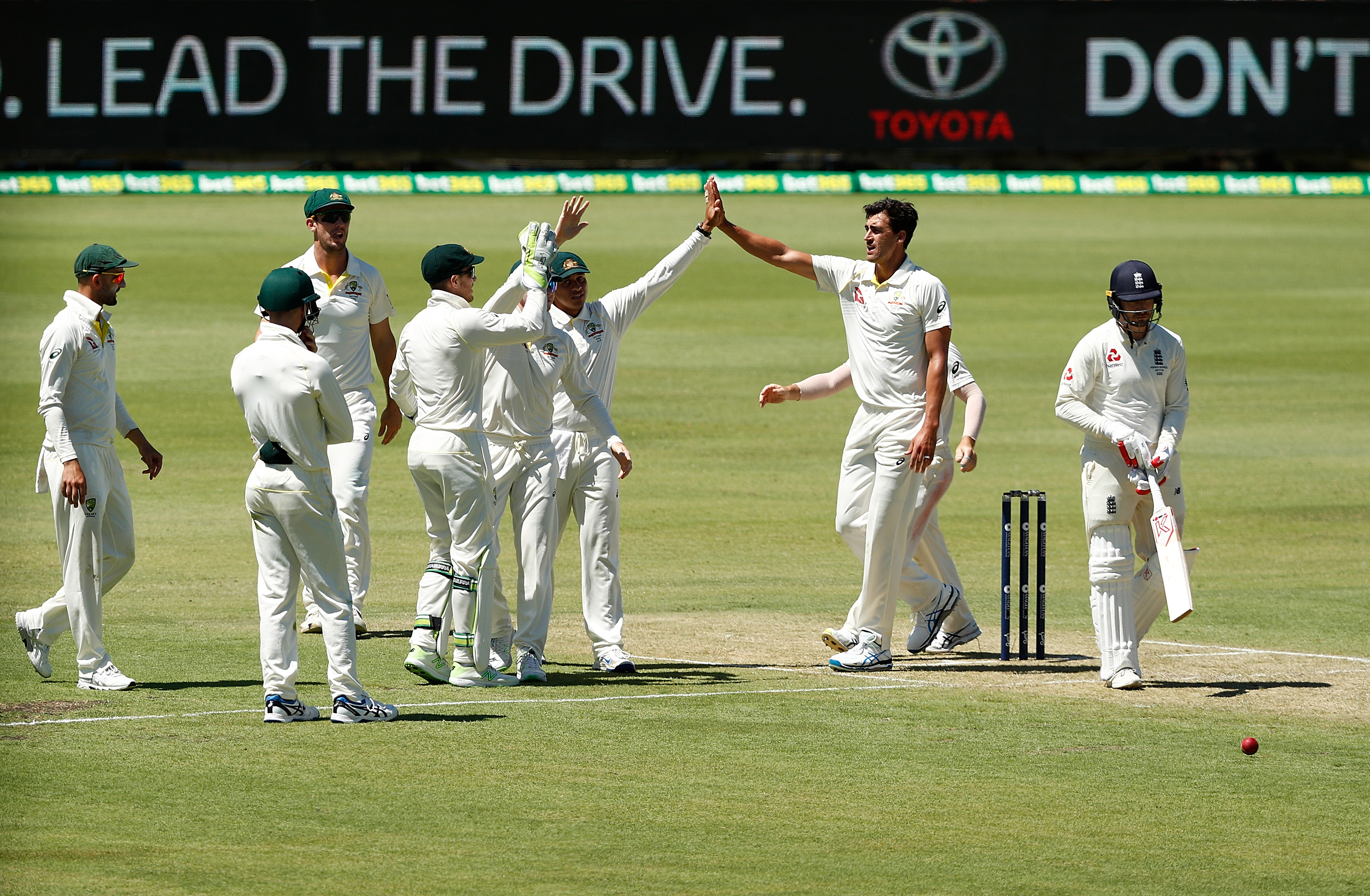Ashes 2017 | Talking points from Day 1 of the Perth Test

England ended the day in a seemingly comfortable position of 305/4 thanks to an eye-catching century by Dawid Malan (110*) and half-centuries by Jonny Bairstow (75*) and Mark Stoneman (56). However, the day will also be remembered for the Australian pace troika’s perseverance and WACA’s bounce.
Mitchell Marsh or Peter Handscomb? Australian selectors get it wrong
Western Australia all-rounder Mitchell Marsh got the nod ahead of struggling No.5 Peter Handscomb in what is possibly the last international game at the historic venue, Perth. The decision stemmed from the fact that the latter looked all at sea against England's bowlers and changed his unusual technique a number of times in the same innings, which didn’t help his cause. But, nothing justifies his exclusion after a failure in only a couple of matches given the team is doing well and on the verge of regaining the treasured urn. Handscomb has proved his ability to play against both spinners and pacers and averaged an incredible 65.85 in home conditions in comparison to Marsh’s paltry average of 21.18 and has done enough to get an extended run. While he has been picked as the fourth pace-bowling option in the team, it must be noted that the younger Marsh has picked up only two wickets in the Sheffield Shield this year bowling in two innings from five matches.
To add to that, Handscomb is a brilliant slip catcher and at the WACA, which provides variable bounce, he could have been an important asset for the hosts. Marsh is not a bad fielder at slips, but he could never match the agility of the Victoria cricketer and he learned that in a hard way when he dropped an easy catch at first slip that signaled a shift in the tide in England’s
WACA, you will be missed
This is going to be the last ever Test match at the WACA, a ground famous for being, primarily during the 1970s and 1980s, the quickest and bounciest pitch in the world. Probably, no ground in Australia defined the 'Australian way' of playing cricket - the success, supremacy, and intensity of their teams over the years - and the ground has also helped in establishing a myth surrounding the Baggy Green. You need to have courage, show aggression, have pace with the ball and daring with the bat to be successful at the WACA. But, since the last decade, rather than making batsmen shudder in fright, the historic venue has been driving bowlers to despair and has become more placid and less quick.
But that wasn't going to happen in the final Test at the venue - NO WAY. The much-fabled new-age comparison to the troika of McGrath, Lee, and Gillespie, managed to extract some excellent bounce off the wicket just to take the fans down the nostalgic line. When Pat Cummins hit Mark Stoneman on his helmet grill and several others just from everywhere from the chest to the helmet, memories of yesteryear came rushing back. With all three hitting the deck hard with speeds above 140, it was only natural that the Western Australian fans would go down on their memory lane cause the new 60,000 capacity Optus Stadium may not give them the same.
DRS Drama continues in Perth as well
DRS' questionable accuracy has long been a constant talking point in Test cricket since its introduction. India opposed the previous version of the technology strongly and after the ICC made some adaptation to it, they changed their mind and used in their matches. But going by the way events have transpired in last few months, it seems like the technology needs a lot of rework to be the perfect solution for the umpiring errors. The Adelaide Test saw eight decisions overturned in the Test and if that was enough, it made its appearance in the as early as the second session of the WACA Test as well.
Today, in the 38th over, Stoneman was attacked by a ripping bouncer by Mitchell Starc and despite trying his best to get out of the way, the ball kept getting big on him and went through to wicketkeeper Tim Paine. The Australian players thought the Surrey player had nicked the ball and appealed for the wicket, but it was ruled not out by standing umpire Marais Erasmus. However, that didn't deter the Aussies as they were fully convinced of the nick and went upstairs for a review.
On checking the replays, it seemed that the English opener fended in front his face but at the time, when the ball passed by, his bottom hand gloves came off the bat. Real-Time Snicko (RTS) had a spike of noise as the ball passed the glove that was off the bat and that was enough for Dar to overturn Erasmus’s on-field decision. The decision left England captain Joe Root and assistant coach Paul Collingwood baffled as the duo came out of the change room door, seemingly urging Stoneman to stay on the field in the hope the DRS decision would be reversed, but further replays and angles suggested that the batsman's top hand had touched the ball with an RTS spike confirming the contact.
However, as per the DRS rule, for a decision to be overturned, there needs to be clear evidence that the wrong call had been made on the field. But in this dismissal, the replays were looking inconclusive and nothing notable showing up on the Hot Spot as well. So, to avoid many such controversies in future, the cricket’s governing body should assess the technology once again.